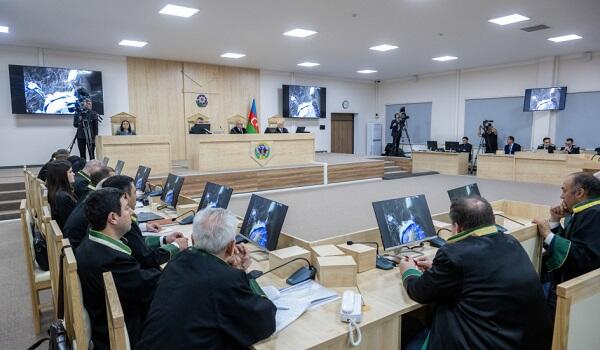When I was in college, porn titillated more by what was hidden than what was shown. But that was back in B.C. days (Before Computers), and way before the Internet.
Axar.az reports citing Psychology Today.
There was a pony keg just off campus where you could buy cigarettes and beer, even if you were underage. It also had a selection of “gentlemen’s magazines.” But those were kept behind the counter, and you had to ask the cashier for them.
You heard about the X-rated drive-ins and adult cinemas, where patrons supposedly had sex in their car or in the back rows of the theater while watching people have sex on screen. But those were in the big cities (like Columbus), not in the small college town where I got my higher education.
Occasionally a frat would host a “movie night” as a fund-raising event. Dozens of young men would pay a few bucks to sit in a darkened room watching people on screen have sex. But nobody in the room was having sex, either with themselves or with anyone else. And as I recall, there really wasn’t that much sex on screen, either. The films all tried to have story lines, even though they were hardly plausible. But we didn’t care. We hadn’t paid to watch a story any more than we bought Playboy for the articles.
Back then, it was easy for the pompous and pious to wag a finger at Evil Pornography and expect a rousing “Amen!” from the pews. Like Supreme Court Justice Potter Stewart, we all knew it when we saw it, but none of else ever saw very much of it.
Things are different now. Any teenager with a computer and a free afternoon can consume far more porn than I ever experienced in my entire young adulthood. Pornography use certainly accounts for a sizable portion of Internet traffic. But not far behind are the sites where pundits wail and gnash their teeth at the evils of pornography.
Today, the pompous and pious still bemoan the dangers of internet porn, and the congregation gives a half-hearted amen. But how many — on either side of the pulpit — point their browsers to their favorite porn site after the service? It’s no longer “I know it when I see it.” Instead, it’s “I know it, because I view it.”
This antipathy toward recorded acts of sexual intercourse pervades academia as well. Plenty of research supposedly shows the deleterious effects of pornography on self-esteem, sexual functioning, and relationship harmony. However, as Canadian psychologists Lorne Campbell and Taylor Kohut point out, you often find what you’re looking for, whether in life or in science.
Despite the strident claims that scientists have proven porn use is harmful to relationships, there is in fact no such evidence. Rather, the assertion is based on correlational data. While plenty of studies have found that men who regularly use porn are dissatisfied with their relationships, this doesn’t mean that porn use causes relationship dissatisfaction.
In fact, as Campbell and Kohut point out, the few longitudinal studies that have looked into this issue suggest the direction of causality may run in the opposition direction. That is, partnered men start using porn after they become dissatisfied with their relationship.
In a recent article in the journal Current Opinion in Psychology, Campbell and Kohut lay out five reasons why the research conducted so far tells us nothing substantial about the association between porn use and relationship satisfaction.
The first issue is that there’s no agreed-upon definition of pornography. Researchers use Justice Potter’s “I know it when I see it” approach, and so anything from nude photos to filmed sexual acts can count as pornography. Some researchers have even included online sexual activities, such as sexting, web cam use, or sex chatting — even the purchase of sex toys over the Internet — as pornographic activities.
Furthermore, there’s no consensus about what constitutes porn use. In some studies, you count as a porn user if you’ve ever seen a Playboy centerfold. Other studies ask for frequencies, such as: “How many times per year/month/week do you use porn?” Still other studies ask participants to rate their porn use on a scale: “Never – Rarely – Sometimes – Often – A Lot.”
The second issue is that most research is correlational, as already mentioned. These kinds of studies are easy to perform. All you have to do is ask about porn use and relationship satisfaction. But you don’t know if one causes the other. It could be that porn use causes relationship dissatisfaction. Or it could also be that relationship dissatisfaction causes porn use.
However, the real Achilles’ heel of correlational research is what’s known as the third variable problem. It could very well be that something else (the “third variable”) is causing both. We can conjecture about a number of potential third variables. Perhaps a mismatch in libido drives both porn use and relationship dissatisfaction. Or maybe emotional issues underlie both. This is, in fact, a fertile area for research, if only psychologists would be willing to set aside their preconceived notions.
The third issue is that most research only looks at solo male porn use. It’s generally assumed that porn is used mainly by men as an aid to masturbation. But, as Campbell and Kohut point out, no empirical research has verified this assumption. Besides, it’s not just solo men who are using porn.
In fact, the few studies that have looked at female porn use suggest more satisfying relationships, at least in terms of sexual intimacy. This is quite the opposite of what's generally found when we look at solo male porn use. So obviously the “porn is bad for relationships” narrative isn’t the full story.
Moreover, there’s been little research so far into couples who use porn together. The focus on solo male porn use blinds researchers to other possible effects that pornography may have on a relationship.
The fourth issue is that researchers tend to start with the assumption that porn use is harmful to relationships. When the data are consistent with this hypothesis, even if they’re only correlational, the study gets published. At the same time, however, any neutral or beneficial effects of porn use go undetected or ignored.
The final issue is that most research in this area recruits individuals in relationships, rather than couples. However, when you’re only looking at one side of a relationship, it’s hard to see all the inter-partner dynamics that come into play. Yes, men who use porn are less satisfied with their relationships. And yes, women whose partners use porn are also less satisfied with their relationships. Still, we can’t see the whole picture until we study the couple in action over time.
In the end, as Campbell and Kohut point out, if we really want to understand the effects of pornography on relationships and even on society more generally, we need to approach the question from three directions. First, we need to ask what the antecedents of porn use are. Is it used because of relationship dissatisfaction or a mismatch in libido? Is it used as an attempt to alleviate depression or anxiety? Are there other reasons?
Second, we need to consider the context in which pornography is used. Even in the case of solo males, there's a completely different set of circumstances for a single versus a married porn user. And we also need to keep in mind that women and couples use pornography as well, even if to a lesser extent than solo men.
Finally, we should consider the consequences of porn use. This can’t be done by assuming harm and citing correlational evidence to support that assumption. Instead, psychologists need to approach the question from an unbiased position. My guess is that we’ll find porn use is complicated, just like any other human behavior. Sometimes it’s harmful, sometimes it’s helpful, and in other cases it really has no effect one way or the other.
Scientists are humans, and like all humans, they have their biases. Yet scientists are expected to hang their biases at the door when they enter the lab. Social scientists often bring political agendas into their research as well. But psychologists, because of the nature of their field, should be well aware of the prejudices that influence their thinking. When it comes to the question of what effect porn use has on relationships, it’s high time for researchers to hang their biases at the laboratory door.





















































